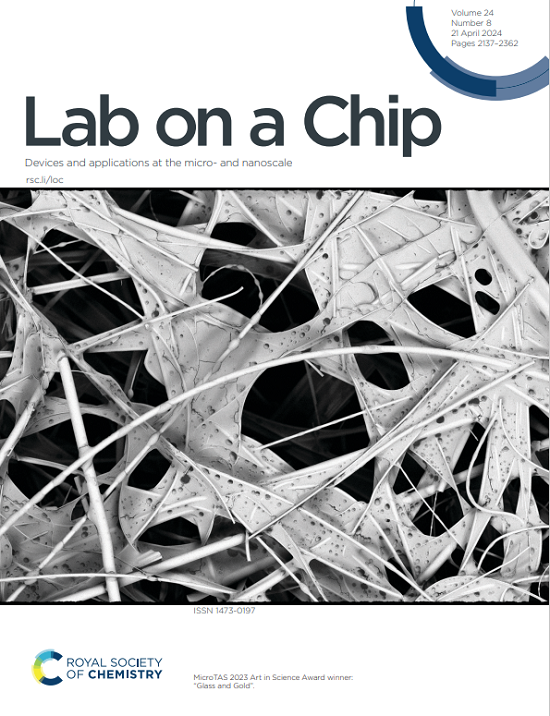3D microfluidic analytical device on a single thread for smart point-of-care blood typing.
IF 6.1
2区 工程技术
Q1 BIOCHEMICAL RESEARCH METHODS
引用次数: 0
Abstract
This paper introduces the concept of three-dimensional microfluidic single thread-based analytical devices (3D-μSTADs) for accurate point-of-care blood typing. The 3D-μSTADs were fabricated using a double-sided imprinting process, where hydrophobic PDMS materials were pressed onto a hydrophilic cotton thread and heated for curing. By harnessing the intricate structures of the cotton fibers in vertical channels, 3D-μSTADs can effectively filter agglutinated red blood cells (RBCs) and allow free RBCs to continuously flow, resulting in a significant difference in wicking behavior between free and agglutinated RBCs. This difference eliminated the traditional requirement for a buffer solution and allowed direct observation of blood typing results based on whether blood flow reached the intended area. In our experiments, the proposed 3D-μSTADs successfully classified 105 ABO and RhD blood samples. To minimize environmental light interference and reduce potential personal bias, we designed a 3D printing blood-typing chip (3D-μThread-BT chip), which integrated the 3D-μSTADs with smartphone scanning for automated result readout. With color algorithmic modifications, the chip can ensure accurate, on-site blood typing across varying ambient light intensities by simply scanning the blood flow results. We believe that this work will inspire further research into 3D microfluidic single thread-based devices, unlocking their potential for a wide range of applications.单螺纹三维微流控分析装置,用于智能护理点血型。
本文介绍了三维微流体单线程分析装置(3D-μSTADs)的概念,用于精确的即时血液分型。采用双面印迹工艺,将疏水性PDMS材料压在亲水性棉线上加热固化,制备出三维μ stads。利用垂直通道中棉纤维的复杂结构,3D μ stads可以有效地过滤凝集红细胞(红细胞),并允许自由红细胞持续流动,从而导致自由红细胞和凝集红细胞之间的排汗行为存在显着差异。这种差异消除了对缓冲溶液的传统要求,并允许根据血流是否到达预期区域直接观察血型结果。在我们的实验中,所提出的3D μ stads成功地分类了105份ABO和RhD血液样本。为了最大限度地减少环境光干扰和潜在的个人偏见,我们设计了一种3D打印血型芯片(3D μ thread - bt芯片),该芯片将3D μ stads与智能手机扫描集成在一起,可自动读取结果。通过修改颜色算法,该芯片可以通过简单地扫描血流结果,在不同的环境光强度下确保准确的现场血型。我们相信这项工作将激发对3D微流体单线程设备的进一步研究,释放其广泛应用的潜力。
本文章由计算机程序翻译,如有差异,请以英文原文为准。
求助全文
约1分钟内获得全文
求助全文
来源期刊

Lab on a Chip
工程技术-化学综合
CiteScore
11.10
自引率
8.20%
发文量
434
审稿时长
2.6 months
期刊介绍:
Lab on a Chip is the premiere journal that publishes cutting-edge research in the field of miniaturization. By their very nature, microfluidic/nanofluidic/miniaturized systems are at the intersection of disciplines, spanning fundamental research to high-end application, which is reflected by the broad readership of the journal. Lab on a Chip publishes two types of papers on original research: full-length research papers and communications. Papers should demonstrate innovations, which can come from technical advancements or applications addressing pressing needs in globally important areas. The journal also publishes Comments, Reviews, and Perspectives.
 求助内容:
求助内容: 应助结果提醒方式:
应助结果提醒方式:


